Hugo Simões "Finding a place to land" - CineEco
Hugo Simões "Finding a place to land"
10 OUT | 18h | Casa Municipal da Cultura de Seia
Finding a Place to Land é um título que pretende ser o fio condutor para a construção de um objecto artístico unitário, um ponto de partida onde a música e a imagem se fundem em poesia transdisciplinar de forma a despertar consciências para as fragilidades do mundo contemporâneo.
Nesta performance, enquanto são executadas obras de música contemporânea para guitarra e electrónica, são projectadas imagens e vídeos, combinados com efeitos predefinidos - de acordo com a evolução do discurso musical - para emocionar, fazer as pessoas pensarem e sensibilizar o público para duas questões-chave no nosso mundo contemporâneo: a crise climática e o problema dos refugiados.
Hugo Simões - Guitarra
Obras de:
Steve Reich
Bruno Maderna
Natasha Barrett
Andrew Staniland
A entrada nos concertos é gratuita.
Os bilhetes devem ser levantados no próprio dia a partir das 17h na bilheteira da Casa Municipal da Cultura de Seia.
É obrigatório o uso de máscara ou viseira para acesso e permanência nos concertos.
Concerto inserido no 26º CineEco - Festival Internacional de Cinema Ambiental da Serra da Estrela
Parceria C.M. Seia / Festival DME
Mais informações em: https://www.facebook.com/events/654089408862210
Bruno Maderna, Serenata per un Satéllite (10 minutos)
Esta obra foi dedicada a Umberto Montalenti Turin, director do ESA (European Space Operation
Centre), com base em Darmstadt, responsável pelo lançamento (1969) do satélite Europeu ESTRO,
para o estudo dos fenómenos relacionados com a aurora boreal. É um dos trabalhos mais importantes
- no sentido da sua inovação - pós-Segunda Guerra Mundial.
Natasha Barrett, Where Shadows Do For Bodies Stand (15 minutos)
John Dowland's song 'Can she excuse my wrongs?' was published in 1597 in the First Book of Songs.
The text is thought to be by Robert Devereux, the 2nd Earl of Essex, a court favourite of Queen
Elizabeth. The song is in the form of a galliard that we find as both consort setting and as three galliards
for lute solo. The divisions in these lute pieces are quite diverse and, even if the authenticity of P. 89
is put in doubt, taken together they may give an idea of DowlandÕs art of extemporization. In 2003
Barrett began work on a live electronics composition for guitarist Stefan Ostersjo. This composition,
'Where shadows do for bodies stand' takes as its starting point Dowland's 'Can she excuse my
wrongs?'. The atmosphere embodied in Dowland's original are re-interpreted rather than re-arranged.
The electroacoustic technique provides a means of escape from modernism, connecting antique music
to a new aesthetic of sound-surrealism and dually serves to expand the guitar's quiet and intimate
sonority.
- Natasha Barrett
Andrew Staniland, Dreaded Sea Voyage (14 minutos)
1. Stephen Hawking says we must flee Earth
2. Gravity pulls us down
3. Dread of the impending sea voyage
Renowned physicist Stephen Hawking says the human race faces extinction unless people leave
Earth.
The Toronto Star, 30th July 2013
“For several months, Mahler had been living in half-acknowledged dread of the impending sea
voyage”
Gustav Mahler: Volume 3. Vienna: Triumph and Disillusion (1904-07) by Henry-Louis de La Grange
“Around the time that I was composing this work, Voyager was, according to NASA, finally exiting our
solar system after some 36 years. On Voyager is a special golden record containing music from Earth.
The selections are diverse, ranging from the first movement of Bach’s Brandenburg Concerto No. 2, to
the music of Javanese court gamelan. As point of departure, I picked a few of the Voyager record
excerpts and transcribed them into a computer scoring program. I then began modulating different
pieces together using an extrapolated Frequency Modulation technique, sort of breeding one measure
of a piece with a measure from another. Out of this process (incidentally, from Bach’s Brandenburg
and Mozart’s Queen of the Night) came several fascinating chords that became points of harmonic
gravity in the writing process. In addition to amplified classical guitar, this piece uses prepared digital
sound files. The sound sources are diverse, however it is notable that there are samples from two of
my previous electroacoustic works, including from True North, where I re-sample the “big band hit” that
appears at the end of the piece, and use it several times at the climax of Dreaded Sea Voyage.”
- Andrew Staniland
Steve Reich, Electric Counterpoint (15 minutos)
1. Fast
2. Slow
3. Fast
Esta obra surge de uma encomenda da Brooklyn Academy of Music para o Festival "Next Wave", foi
dedicada e estreada pelo guitarrista Pat Metheny. Composta durante o verão de 1987, tem a duração
aproximada de 15 minutos. É a terceira de uma série de peças, a primeira, Vermont Counterpoint em
1982 dedicada ao flautista Ransom Wilson seguida de New York Counterpoint em 1985 para o
clarinetista Richard Stolzman. Todas as peças para solista e electrónica (sons pré-gravados).
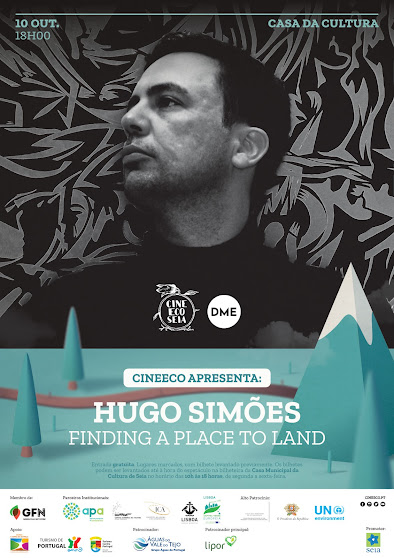
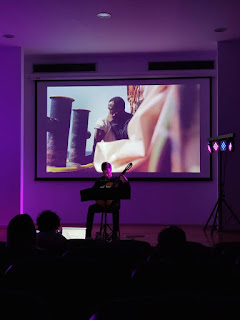
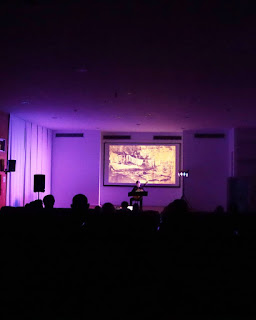
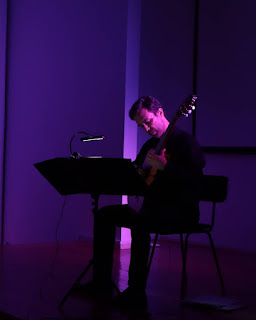
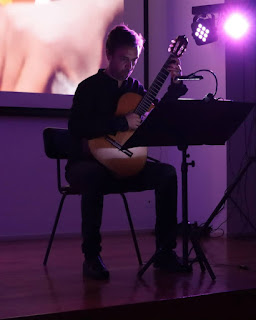
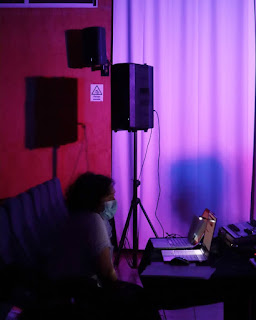
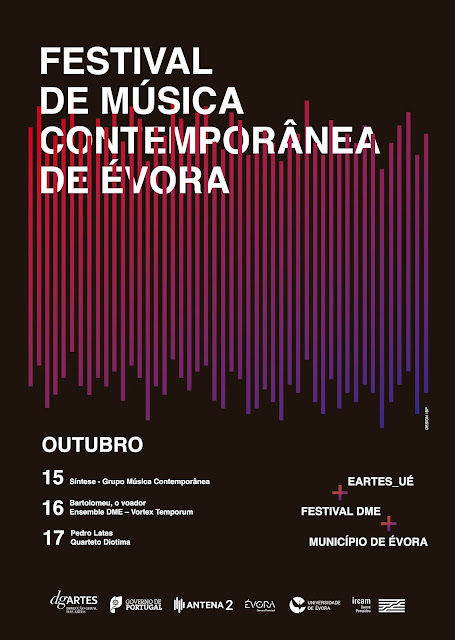
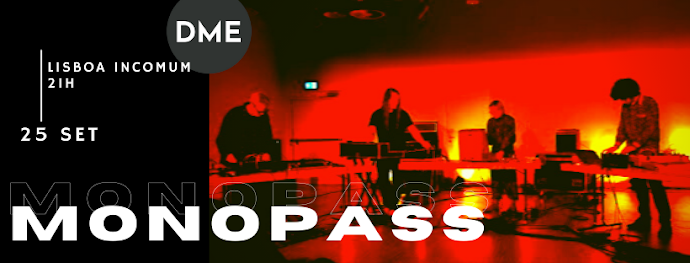

Comentários